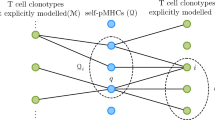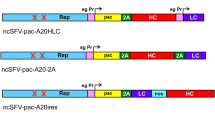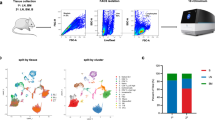Abstract
BONE-MARROW-derived (B) lymphocytes belonging to the same clone bear antigen receptors which share a specific marker (idiotype) with antibodies secreted by their progeny1. According to the network theory of immunity2, immunocompetent B cells recognise each other through a network of idiotype anti-idiotype interactions. This theory implies the existence of B and T cells specific for autologous idio-types. To facilitate detection of such cells it is advantageous to study an immune response of restricted heterogeneity. The immune response of BALB/c mice to phosphoryl-choline (PC) is idiotypically homogeneous: the anti-PC antibodies produced bear almost exclusively the idiotype characteristic of the BALB/c PC-binding myeloma protein TEPC-15 (T15) (ref. 3). T15 is a member of a family of PC-binding myeloma proteins of BALB/c origin, which bear distinct idiotypes4. Idiotypes representative of these other proteins are not, however, expressed by BALB/c on immunisation with PC. It has recently been reported that helper T cells from BALB/c mice can discriminate among idiotypes expressed on several of these anti-PC myeloma proteins. These authors did not, however, demonstrate helper T cells specific for the T15 idiotype5. This failure was attributed to a state of tolerance induced and maintained by the high levels of immunoglobulin bearing the T15 idiotype in conventional BALB/c mice. In this report we demonstrate the existence of T cells reactive to an autologous idiotype and we discuss the possible regulatory role of these T cells in the immune response to PC.
This is a preview of subscription content, access via your institution
Access options
Subscribe to this journal
Receive 51 print issues and online access
$199.00 per year
only $3.90 per issue
Buy this article
- Purchase on Springer Link
- Instant access to full article PDF
Prices may be subject to local taxes which are calculated during checkout
Similar content being viewed by others
References
Cosenza, H., and Kohler, H., Proc. natn. Acad. Sci. U.S.A. 69, 2701–2705 (1972).
Jerne, N. K., Ann. Immunol. (Inst. Pasteur). 125C, 373–389 (1974).
Cosenza, H., and Kohler, H., Science 176, 1027–1029 (1972).
Lieberman, R., Potter, M., Mushinski, E. B., Humphrey, W., Jr, and Rudikoff, S., J. exp. Med., 139, 983–1001 (1974).
Janeway, C. A., Jr, Sakato, N., and Eisen, H. N., Proc. natn. Acad. Sci. U.S.A., 72, 2357–2360 (1975).
Augustin, A. A., and Cosenza, H., Eur. J. Immun. 6, 497–501 (1976).
Julius, M. H., Simpson, E., and Herzenberg, L. A., Eur. J. Immun., 3, 645–649 (1973).
Potter, M., and Lieberman, R., J. exp. Med., 132, 737–751 (1970).
Barstad, P., et al., Science, 183, 962–964 (1974).
Cunningham, A. J., and Szenberg, A., Immunology, 14, 599–600 (1968).
Jerne, N. K., and Nordin, A. A., Science, 140, 405–407 (1963).
Inman, J. K., Merchant, L., Claflin, L., and Tacey, S. E., Immunochemistry, 10, 165–174 (1973).
Eichmann, K., Eur. J. Immun., 5, 511–517 (1975).
Author information
Authors and Affiliations
Rights and permissions
About this article
Cite this article
JULIUS, M., AUGUSTIN, A. & COSENZA, H. Recognition of a naturally occurring idiotype by autologous T cells. Nature 265, 251–253 (1977). https://doi.org/10.1038/265251a0
Received:
Accepted:
Issue Date:
DOI: https://doi.org/10.1038/265251a0
This article is cited by
-
The immune system and lymphoma
La Ricerca in Clinica e in Laboratorio (1987)
-
Cooperation between antigen-reactive T cells and anti-idiotypic B cells in the anti-idiotypic response to antigen-antibody complexes
Nature (1979)
-
Immunological networks
Nature (1977)
Comments
By submitting a comment you agree to abide by our Terms and Community Guidelines. If you find something abusive or that does not comply with our terms or guidelines please flag it as inappropriate.



